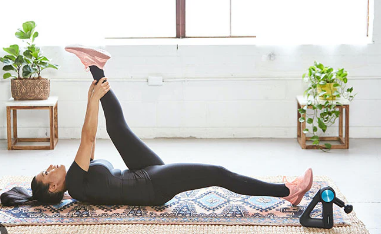Introduction: Exercise resistance bands have emerged as indispensable tools in the fitness world, offering a versatile and effective way to build strength, improve flexibility, and enhance overall fitness. Whether you’re a beginner looking to kickstart your fitness journey or an experienced athlete seeking to diversify your workouts, resistance bands provide a portable, affordable, and adaptable solution for achieving your fitness goals. In this article, we delve into the benefits, types, and practical applications of exercise resistance bands, empowering you to harness their full potential in your fitness routine.
Benefits of Exercise Resistance Bands:
1. Versatility: One of the primary advantages of exercise resistance bands is their versatility. These bands can be used to target virtually every muscle group in the body, making them ideal for full-body workouts. From upper body exercises like bicep curls and shoulder presses to lower body movements like squats and lunges, resistance bands offer endless possibilities for challenging and effective workouts.
2. Progressive Resistance: Exercise resistance bands provide variable resistance throughout the entire range of motion, allowing for continuous tension on the muscles. Unlike traditional weights, where resistance remains constant, resistance bands offer progressive resistance, meaning the resistance increases as the band is stretched. This dynamic resistance stimulates muscle growth, enhances strength gains, and prevents plateaus in your fitness journey.
3. Portability and Convenience: Exercise resistance bands are lightweight, compact, and portable, making them perfect for home workouts, travel, or outdoor training sessions. With no need for bulky equipment or gym memberships, resistance bands offer a convenient and cost-effective solution for maintaining fitness routines on the go. Simply stash them in your gym bag, suitcase, or backpack, and you’re ready to exercise anytime, anywhere.
4. Joint-Friendly: Resistance bands provide a low-impact alternative to traditional weights and machines, reducing stress on the joints and minimizing the risk of injury. The elastic nature of resistance bands allows for smooth and controlled movements, promoting proper biomechanics and alignment during exercises. Whether you’re recovering from an injury or looking to protect your joints during workouts, resistance bands offer a safe and effective solution for building strength and improving mobility.
Types of Exercise Resistance Bands:
1. Loop Bands: Loop bands, also known as mini bands or booty bands, are small, closed-loop bands typically made from latex or fabric. These bands are versatile tools for lower body exercises, such as squats, hip thrusts, and lateral leg raises. Loop bands come in different resistance levels, allowing you to adjust the intensity of your workouts.
2. Tube Bands with Handles: Tube bands with handles consist of a flexible tube with handles on each end, typically made from rubber or latex. These bands are ideal for upper body exercises like chest presses, rows, and tricep extensions. The handles provide a comfortable grip and allow for a wide range of motion during exercises.
3. Figure 8 Bands: Figure 8 bands, as the name suggests, have a figure-eight shape with handles on each end. These bands are versatile tools for both upper and lower body exercises, offering a secure grip and stability during workouts. Figure 8 bands are particularly effective for exercises like chest flies, lateral raises, and leg curls.
4. Flat Bands: Flat bands are wide, flat strips of rubber or latex that offer resistance when stretched. These bands can be used for a variety of exercises, including upper body, lower body, and core exercises. Flat bands are often used in physical therapy and rehabilitation settings due to their gentle resistance and versatility.
Practical Applications of Exercise Resistance Bands:
1. Strength Training: Incorporate resistance bands into your strength training routine to target specific muscle groups and add variety to your workouts. Experiment with different resistance levels and band configurations to adjust the intensity of your exercises and challenge your muscles in new ways.
2. Flexibility and Mobility: Use resistance bands for dynamic stretching and mobility exercises to improve flexibility, range of motion, and joint mobility. Incorporate band-assisted stretches into your warm-up or cooldown routine to enhance muscle elasticity and prevent injury.
3. Rehabilitation and Injury Prevention: Resistance bands are valuable tools for rehabilitating injuries and preventing future injuries. Work with a physical therapist or fitness professional to develop a customized rehabilitation program using resistance bands to target weak or injured muscles and improve joint stability.
4. Functional Training: Resistance bands promote functional strength and stability by mimicking real-life movements and engaging multiple muscle groups simultaneously. Incorporate functional exercises like squats, lunges, and rows using resistance bands to improve balance, coordination, and overall functional fitness.
Conclusion: exercise resistance bands offer a versatile, effective, and convenient solution for achieving fitness goals and maintaining an active lifestyle. Whether you’re looking to build strength, improve flexibility, rehabilitate injuries, or enhance athletic performance, resistance bands provide a dynamic and adaptable tool for achieving your fitness goals. By incorporating resistance band exercises into your workout routine, you can maximize your fitness potential, sculpt a stronger, fitter, and more resilient body, and enjoy the benefits of exercise wherever life takes you.
Maximizing Fitness with Exercise Resistance Bands

Categories:


